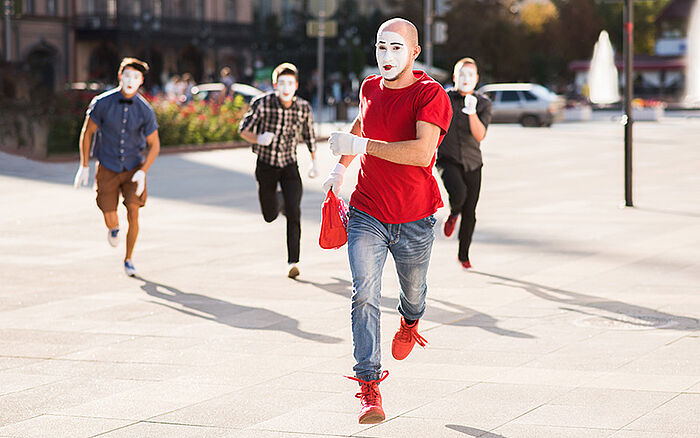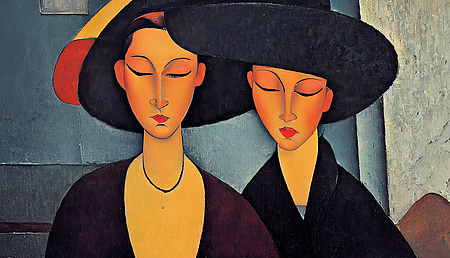
Copyright definition made simple
Modern media is full of misconceptions about copyrights, where they can be found and what they do. Yet, at the same time, copyright remains one of the most significant forms of Intellectual Property (IP) to how we express our ideas and communicate meaning. This makes an understanding of these rights essential for a deeper appreciation of the artistic process and how to effectively support creators.
Although copyright law differs across jurisdictions, the goal is to empower authorship by providing proper credit and allowing makers to benefit financially from their efforts and guard their reputations. This often means keeping imitators, plagiarists and pirates at bay.
What is a copyright?
At its core, a copyright grants its owner the exclusive right to control certain uses of their original works of authorship, which may include literary, artistic, musical, cinematographic and software-based creations. As a form of IP, copyrights prohibit the unauthorized reproduction, distribution, adaptation, public performance, communication or other exploitative use of a work, particularly when undertaken for commercial gain. Any such unsanctioned use may constitute copyright infringement and could lead to legal action.
Despite this, copyright law is not about making unscrupulous monopolies. Instead, it serves as a legal framework that carefully balances the rights of creators and those of consumers. It protects original works from unpermitted use, enabling authors, artists and innovators to benefit from their creative efforts. At the same time, it incorporates mechanisms – such as limitations, exceptions and fair use or fair dealing provisions – that allow the public to access, utilize and build upon copyrighted material in lawful and meaningful ways. As a result, the specifics of duration and scope of protection can vary across jurisdictions.
The Berne Convention, which sets a minimum standard of copyright protection for signatory countries to implement in their domestic law, states that these rights last for the author's lifetime plus at least 50 years. However, since this is the agreed-upon baseline, national regulations may differ; as an example, material in the United States is protected for 70 years after the creator's death. Nonetheless, all 181 signatories of the Berne Convention are required to extend the same protection to works originating from abroad as to those produced within their borders.

Concluded in 1886, the Berne Convention is the foundational agreement for the protection of literary and artistic works on an international scale. It was last amended in 1979.

Concluded in 1886, the Berne Convention is the foundational agreement for the protection of literary and artistic works on an international scale. It was last amended in 1979.
Copyrights encompass not only significant economic rights but also "moral rights," which allow creators to object to any distortion, mutilation or other modification of their work that could harm their reputation or integrity, even if they no longer hold the economic rights to exploit the work.
Countries weigh the significance of these economic and moral rights unequally. For instance, in German civil law, the author's enshrined status links their personal and financial concerns much more closely than in common law countries such as the United States. There, the rationale places greater emphasis on a work's nature as a commercial asset than as a reflection of the creator's person.
Copyright limitations
Another way in which jurisdictions differ is the approach to the exceptions set by the Berne Convention. Some countries, like the United States, have rules for "fair use," which allows people to use copyrighted content without permission under certain circumstances. Other countries, such as the United Kingdom, apply the concept of "fair dealing," with specific guidelines determining what constitutes acceptable use.
Hence, courts in the United Kingdom examine the question: "How would a fair-minded and honest person have dealt with the work?" The United States' fair use test is slightly different, taking into account the purpose and character of the use, the nature of the copyrighted work, the amount and substantiality used and the effect on the original's potential market value. Generally speaking, the purposes of education, reporting, parody and criticism are justifiable around the world, provided the reproduction involved is not excessive.
Perhaps the most interesting aspect of this type of IP is in how jurisdictions decide what can and cannot be copyrighted, as each jurisdiction defines its own parameters.
Protection specifics
A copyrightable piece is like art itself: difficult to define, but you know it when you see it. The most substantive criteria are originality and expression. In practice, though, this is a very low bar to clear; any person's work displaying a degree of skill, labor or judgment or a "modicum of creativity" could qualify. So, that means everything from crayon scribblings on the wallpaper to a priceless masterpiece in an art gallery can benefit from copyright protection.

Beauty is not in the eye of IP. A piece of art, music or literature does not have to be masterfully crafted, aesthetic or even "good" to be copyrightable.

Beauty is not in the eye of IP. A piece of art, music or literature does not have to be masterfully crafted, aesthetic or even "good" to be copyrightable.
However, it is crucial to remember that copyrights pertain to expression and not the underlying ideas. Thus, you can copyright a portrait, melody or essay, but not a fact, procedure, concept or mathematical formula. Some common types of copyrightable material include:
- Literary works: Novels, articles, poems, plays
- Visual works: Paintings, sculptures, drawings
- Musical and video works: Films, songs, compositions
- Other creations: Advertisements, architecture, choreography, computer programs, databases
In response to the advent of generative artificial intelligence (AI), copyright bodies have been updating or clarifying their regulations to set out their positions that copyright protection generally applies only to works that include a meaningful degree of human authorship. (Even prior to the emergence of generative AI, both animals and "non-human spiritual beings" had been denied copyright, as the law had firmly established that only human authorship qualifies for protection.)
How to register and protect a copyright
In most countries, you (assuming you are a human) automatically own these rights as soon as a work is "fixed" into a tangible or permanent medium. However, in some countries, including the United States, you can also formally register copyrights, which can make it easier to prove ownership, transfer rights and pursue litigation.
The creator is usually, but not always, the copyright owner. In an employment or work-for-hire contract, ownership of any material produced in the course of normal duties typically transfers to the employer / hirer. For independent creations, rights can be transferred to someone else, just like with any other kind of property. Alternatively, you can hold on to the copyrights and offer a license for sanctioned use by one or more other parties, usually for an upfront fee or ongoing royalty.
If someone exploits your copyrighted work without this license, you have a variety of options. You may need to send a formal cease and desist letter telling the other party to stop the injurious action. Depending on the laws in your jurisdiction, you can potentially use mediation, arbitration or litigation approaches; contact internet service providers via "notice-and-takedown" procedures or, if the case escalates to the criminal offense of copyright piracy, speak to authorities.

Article 61 of the Agreement on Trade-Related Aspects of Intellectual Property Rights (TRIPS) outlines the option for criminal proceedings in cases of IP infringement that are willful and on a commercial scale.

Article 61 of the Agreement on Trade-Related Aspects of Intellectual Property Rights (TRIPS) outlines the option for criminal proceedings in cases of IP infringement that are willful and on a commercial scale.
While these elements are generally considered copyright basics, there is always more to learn about IP protection. This is especially true in a world where new technologies blur the lines of provenance, access and fairness.
IP FAQs: Copyrights and other IP protection
The most common questions about copyrights and other IP protection generally revolve around the ownership and transfer of applicable rights. Here are a few quick answers:
What is the difference between a copyright, a patent and a trademark?
Copyrights, patents and trademarks are all IP protections, but they apply to different kinds of works.
A copyright protects original works of authorship, such as literary, dramatic, musical and certain other intellectual works. A patent protects inventions, granting exclusive rights to make, use and sell technical solutions for a limited period. A trademark protects words, phrases, symbols or designs that identify and distinguish the source of goods or services of one party from those of others.
Can multiple entities share copyright ownership?
Yes, multiple entities can share copyright ownership. This typically occurs in the case of joint works, which are created by two or more authors intending to merge their contributions into inseparable or interdependent parts of a unitary whole. In such instances, the co-authors are generally considered co-owners of the copyright.
Can you inherit a copyright?
Yes, you can inherit a copyright. Just like any other kind of property, you can inherit someone else's right to use, distribute and even make money from an original work. This is an essential component of copyrights since they last for a minimum of 50 years after the author's death.
Who is a copyright owner?
Nearly everyone is a copyright holder. If you have ever created something original in a tangible or permanent medium, like drawing on a piece of paper or recording a song on a digital file, you own the copyright to it.
This also means you may benefit from IP defense. Want to learn more about copyright basics and how to protect your creative works? Contact the Dennemeyer team today.
Filed in

How do the copyright systems in Germany and the United States help musicians protect their songs against political appropriation?


